Death
Happy Valentine’s Day 2022!
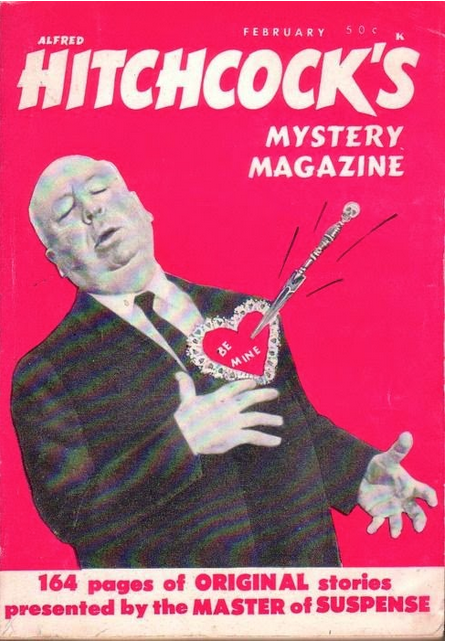
Posted By: Paul - Mon Feb 14, 2022 -
Comments (0)
Category: Death, Holidays, Hollywood, Magazines, Love & Romance
Unlikely Reasons for Murder No. 7
Full article here.
Posted By: Paul - Sun Feb 06, 2022 -
Comments (0)
Category: Death, Food, Motor Vehicles, Twenty-first Century
Surviving a fall from the Empire State Building
Two people have jumped from the observation deck of the Empire State Building, intending to commit suicide, and survived.The first was Thomas Helms, a 27-year-old artist from Hawaii. He jumped on Dec 22, 1977, but the winds blew him onto a ledge 15-feet below. After lying stunned for a while, he managed to crawl back inside through a window.
The second survivor was Elvita Adams of New York City. She jumped on Dec 2, 1979, but again the wind blew her back toward the building, depositing her on a balcony on the 85th floor. A security guard noticed her there and pulled her back inside.
For whatever reason, the case of Elvita Adams attracted more attention. It inspired an off-Broadway one-man show, "I've Been Elvita Adams," which didn't get good reviews.
Based on these two cases, windy days in December would seem to be the best days for surviving a jump from the Empire State Building.
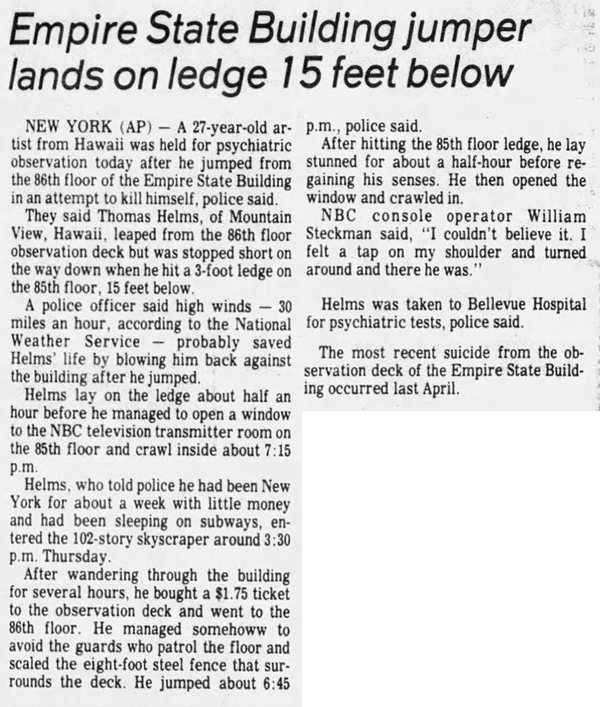
Bridgewater Courier-News - Dec 23, 1977

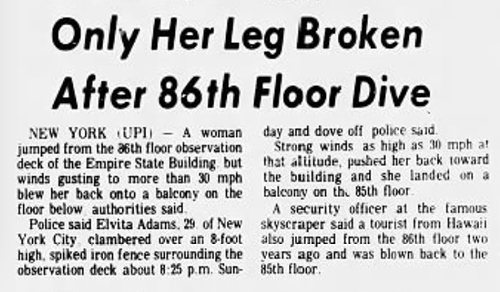
Provo Daily Herald - Dec 3, 1979
Posted By: Alex - Tue Feb 01, 2022 -
Comments (4)
Category: Death, Suicide, 1970s
Acoustic Skulls
When excavating medieval and early-modern buildings in northern Europe, archaeologists sometimes find horse skulls buried beneath them. One theory is that the skulls were placed there for magical, ritualistic reasons. Another possibility is that they served an acoustic purpose.Sonja Hukantaival discusses this in her 2009 article "Horse Skulls and 'Alder-Horse': The Horse as a Building Deposit".
In churches the acoustics were very important, of course. And in houses were people danced and music was played, but why in threshing barns? It was considered important that the sound of threshing carried far. Could this have some magic purpose? It is well known that in many cultures loud noises are considered to expel evil forces. So this "practical" custom of acoustic skulls may not be contradictory to magical and symbolic acts at all. One question to consider is also why horses' skulls were preferred. One would presume that the skulls of cattle would be available more often than those of horses, and possibly just as suitable for acoustics.
More info: IAC Archaeology
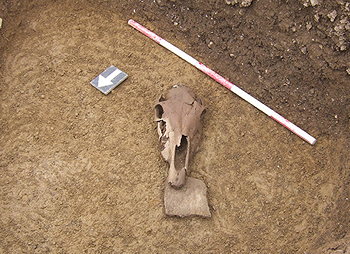
Posted By: Alex - Mon Jan 10, 2022 -
Comments (0)
Category: Death, Medieval Era, Archaeology
Cemetery Honey
You can buy it, in person, at Forest Home Cemetery. Or you can purchase it online from Fairy Garden Hives. For an extra $12 you can get the "Friday the 13th Limited Edition" cemetery honey.

Posted By: Alex - Sat Jan 08, 2022 -
Comments (3)
Category: Death, Food
Death Ed
In the early 1970s, inspired by the introduction of Sex Education classes, some religious leaders and funeral directors suggested adding Death Education classes to high school curriculums. And apparently such classes were introduced, for a while, at some schools.
The Raleigh Register Beckley Post-Herald - Aug 14, 1971
The book Mind and Society Fads, by Frank Hoffmann and William Bailey, offers some info about how Death Education classes were conducted:
Death education classes also required students to write position papers on a controversial death issue, study cryogenics, debate the religious aspects of death, play "Run For Your Life" — what would you do if you only had a limited time to live, and envision what might precipitate the deathblow(s) to earth...
Paradoxically, teaching children and adolescents about death has not raised parental hackles like sex education. During the same time that death education (i.e., the most morbid aspect of living) struggled for a foothold, classroom instruction about sexuality (i.e., the most vivid aspect of living) met with considerable resistance.
Posted By: Alex - Wed Dec 29, 2021 -
Comments (5)
Category: Death, Education
The death of an anti-seatbelt crusader
Jan 2005: Three months after writing an article in a student newspaper denouncing seatbelt laws as intrusions on individual liberties, Derek Kieper died when a vehicle he was in skidded off an icy road into a ditch. Two others in the car, who were wearing seatbelts, survived. Derek, however, was not wearing a seatbelt.I don't know if Kieper ever officially won a Darwin Award, but he's certainly been nominated for one by many people.

Lincoln Journal Star - Jan 5, 2005
Posted By: Alex - Mon Dec 27, 2021 -
Comments (2)
Category: Death, Cars
The Onstage Death of Leonard Warren
Article source: Wilkes-Barre Times Leader (Wilkes-Barre, Pennsylvania) 05 Mar 1960, Sat Page 2As his Wikipedia page summarizes:
on March 4, during a performance of La forza del destino with Renata Tebaldi as Leonora and Thomas Schippers conducting, Warren suddenly collapsed and died on stage. Eyewitnesses including Rudolf Bing reported that Warren had completed Don Carlo's Act III aria, which begins Morir, tremenda cosa ("to die, a momentous thing"), and was supposed to open a sealed wallet, examine the contents and cry out "È salvo, o gioia" (He is safe, oh joy), before launching into the vigorous cabaletta. While Bing reports that Warren simply went silent and fell face-forward to the floor,[3] others state that he started coughing and gasping, and that he cried out "Help me, help me!" before falling to the floor, remaining motionless. Roald Reitan, singing the Surgeon, was on stage with Warren at the time of his death, and attempted to render aid.[1]
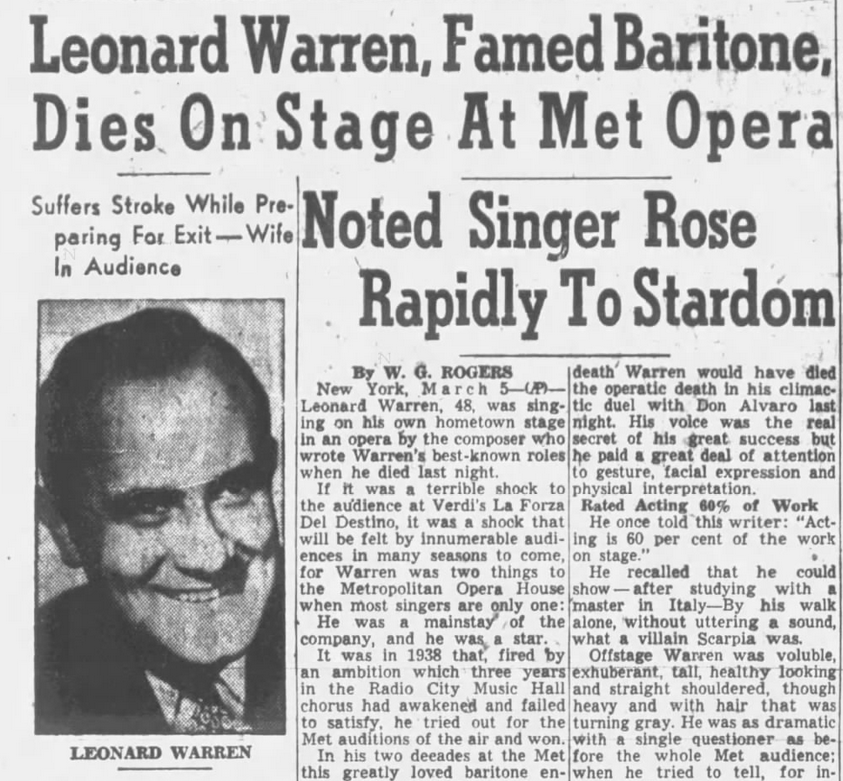
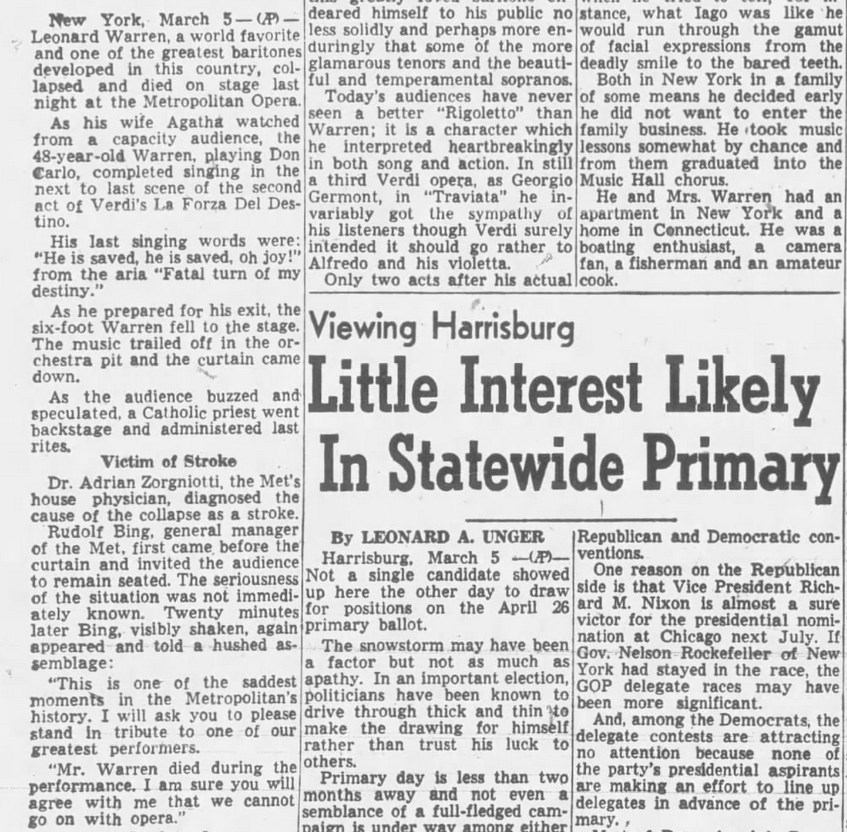
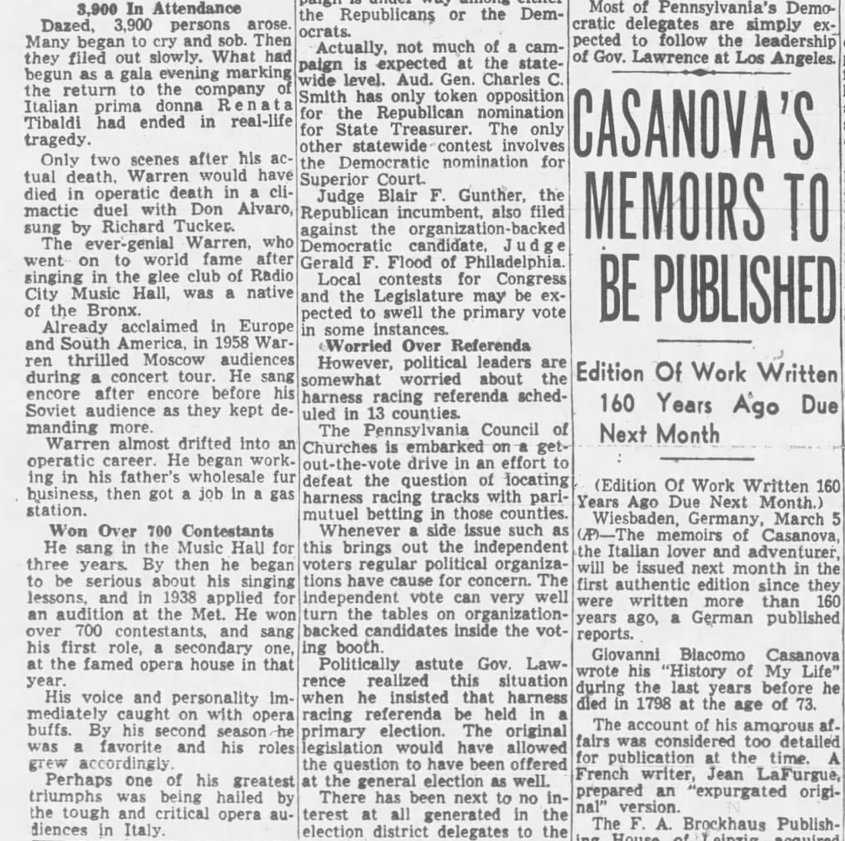
Posted By: Paul - Sun Dec 05, 2021 -
Comments (3)
Category: Death, Music, Noises and Other Public Disturbances of the Peace, 1960s
Jim Gernhart, the living corpse
In 1951, Jim Gernhart, having recently retired, decided to hold a rehearsal of his own funeral. He kept rehearsing it each subsequent year for 25 years, until finally (still alive) he gave up. Because of this annual ritual he became known as Colorado's "living corpse".He eventually died in 1980 at the age of 103.
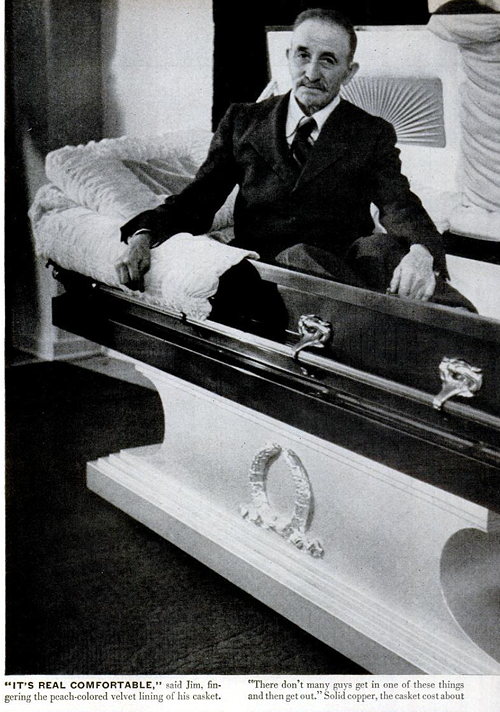
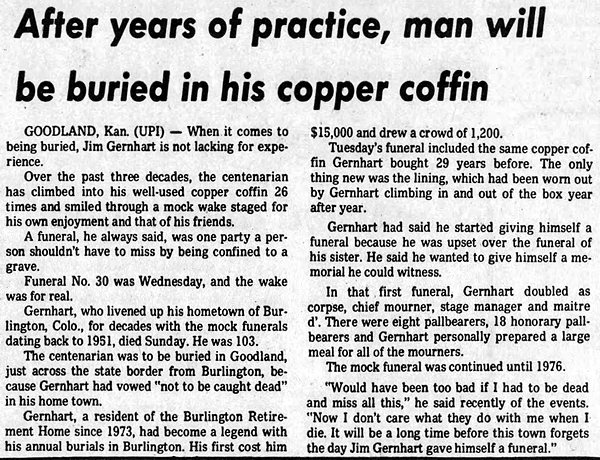
Tampa Tribune - Jan 24, 1980
Posted By: Alex - Tue Nov 30, 2021 -
Comments (7)
Category: Death, Eccentrics
Miss Spirit World of 1960
In our ongoing exploration of strange beauty titles, this may be the strangest one yet. To be considered for this title, a contestant had to be dead.In 1960, the editors of Psychic Observer magazine asked their readers to send in "pictures of departed beauties taken by spirit photographers." A photo of the contestant while alive was also requested. The readers of the magazine would then vote to determine the winner.
Unfortunately, I haven't yet been able to track down any pictures of the Miss Spirit World contestants. Only a few issues of Psychic Observer are archived online. Nor are there back copies in a library near me.

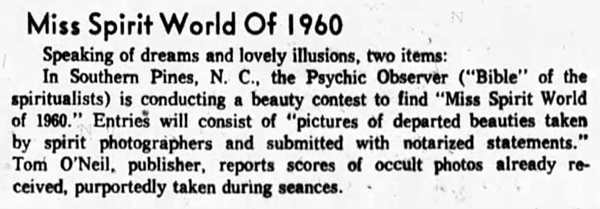
Carlsbad Current-Argus - Feb 9, 1960
Posted By: Alex - Fri Nov 19, 2021 -
Comments (0)
Category: Awards, Prizes, Competitions and Contests, Death, 1960s

| Who We Are |
|---|
| Alex Boese Alex is the creator and curator of the Museum of Hoaxes. He's also the author of various weird, non-fiction, science-themed books such as Elephants on Acid and Psychedelic Apes. Paul Di Filippo Paul has been paid to put weird ideas into fictional form for over thirty years, in his career as a noted science fiction writer. He has recently begun blogging on many curious topics with three fellow writers at The Inferior 4+1. Contact Us |




